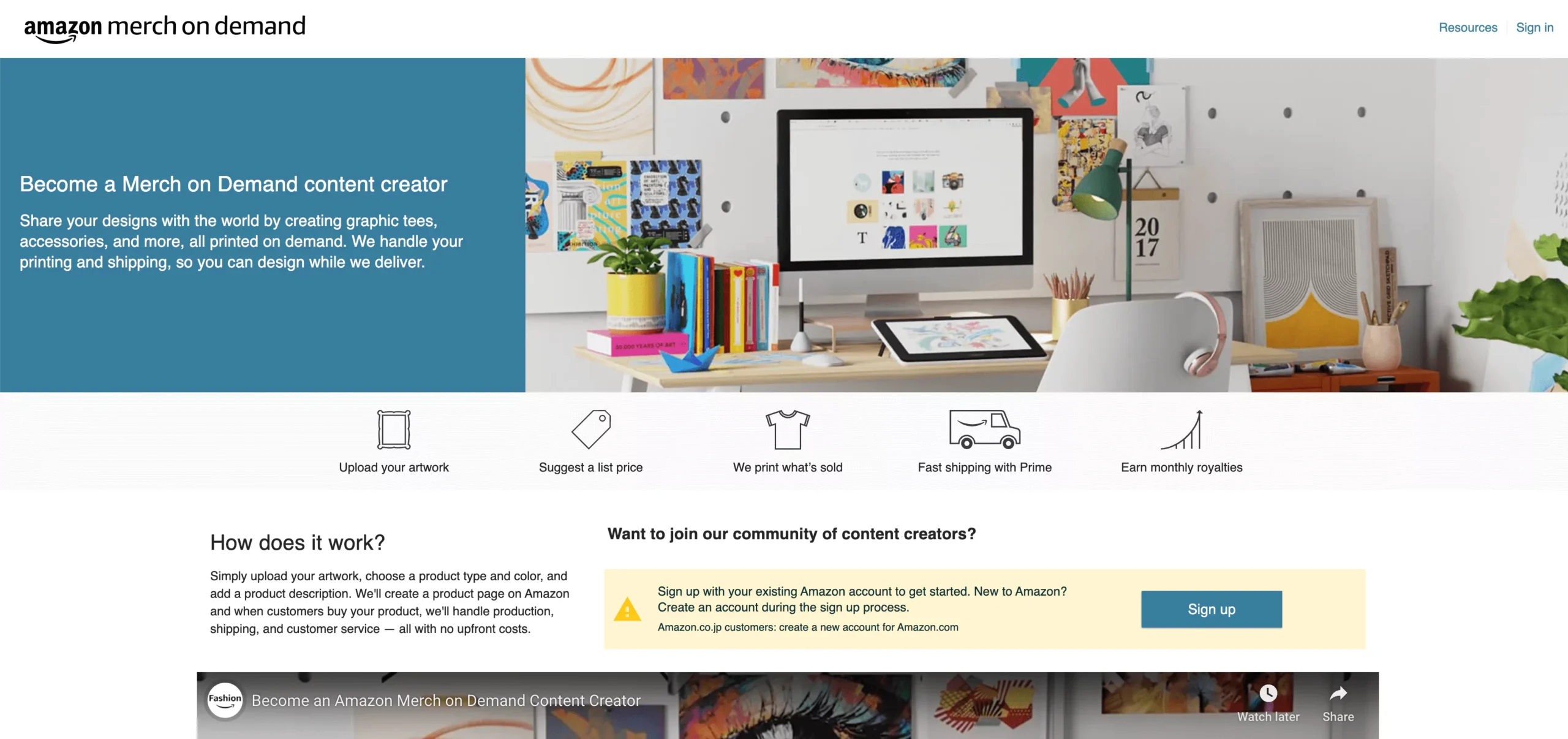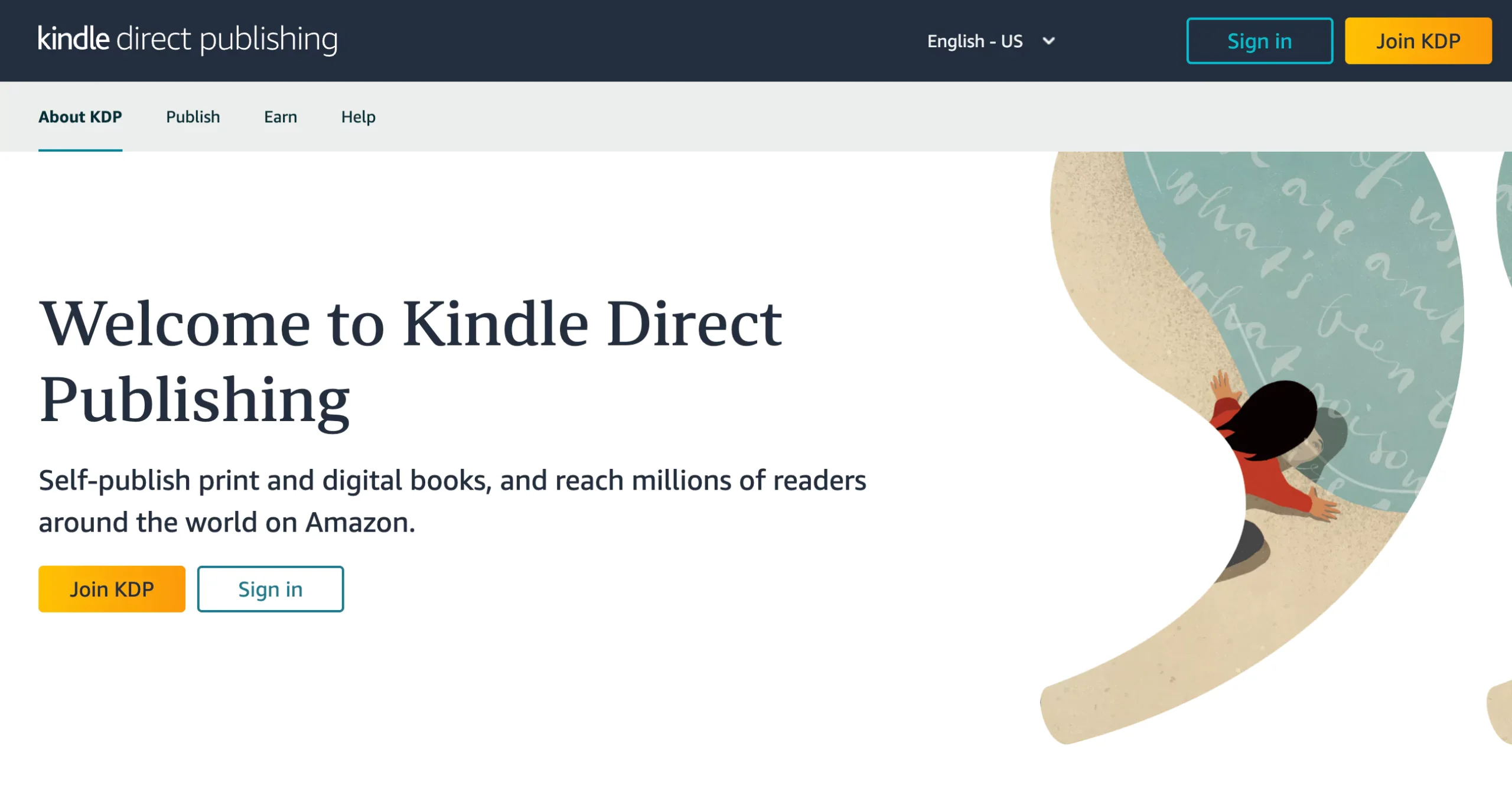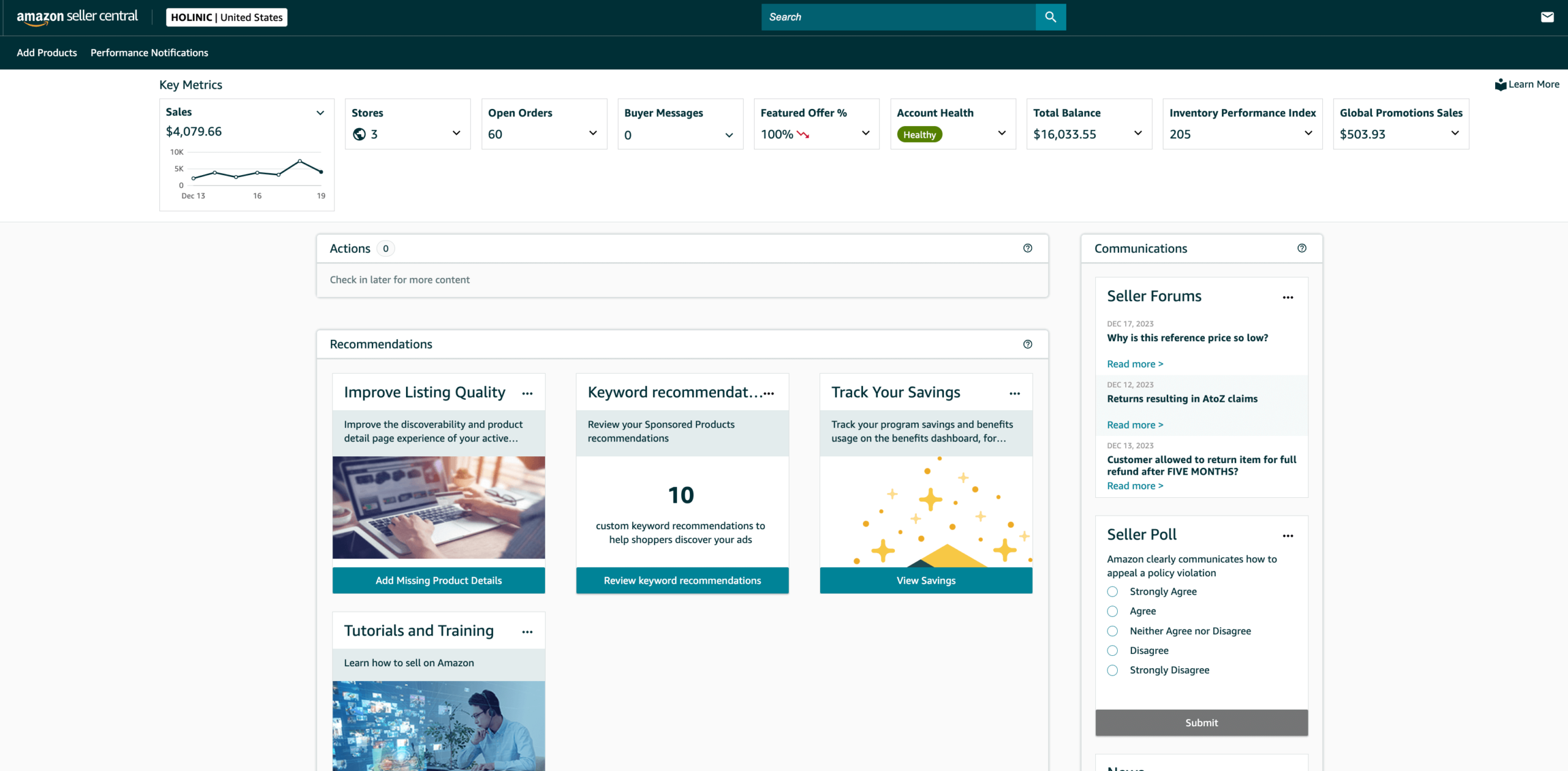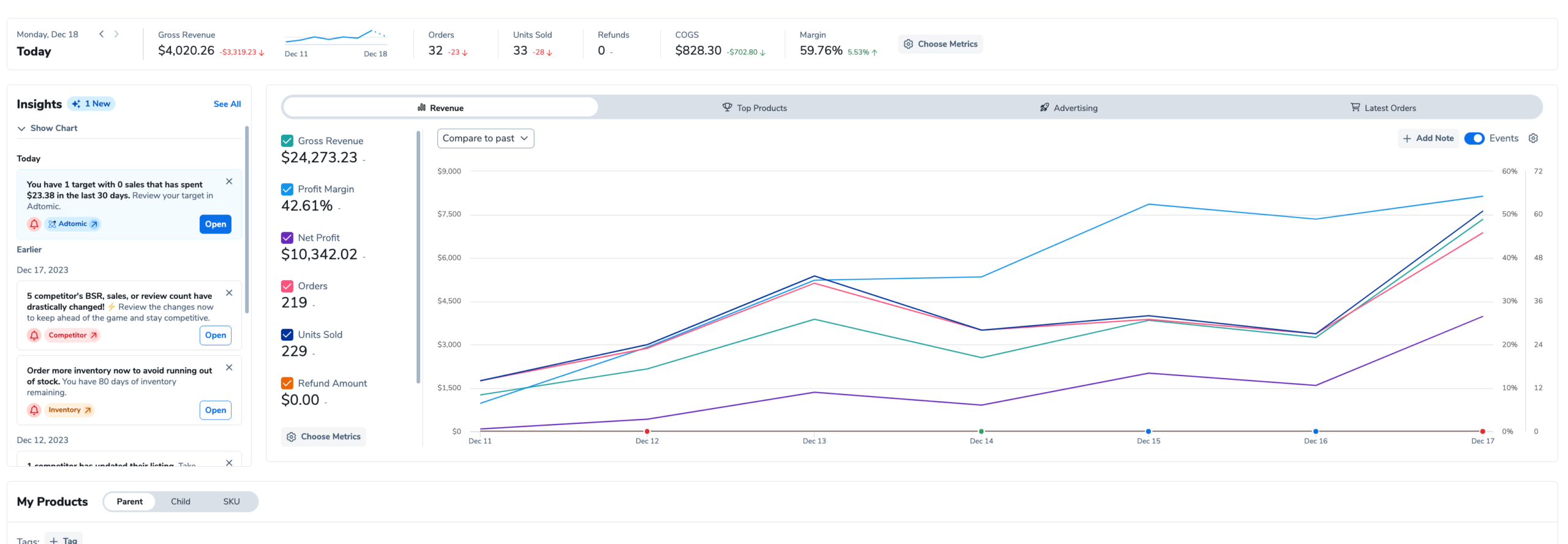How to Sell on Amazon Without Inventory

Table of Contents
- Introduction
- To Hold Inventory or Not, That Is the Question
- Different Methods of Zero Inventory Selling
- 1. Dropshipping
- 2. Merch by Amazon or Print on Demand
- Pros of Merch by Amazon
- Cons of Merch by Amazon
- 3. Kindle Digital Publishing (KDP)
- Pros of Amazon KDP
- Cons of Amazon KDP
- 4. Digital Products
- Important Considerations When Selling Without Inventory
- How to Get Started Selling Without Inventory
- 1. Set Up Your Amazon Account
- 2. Identify a Profitable Product
- 3. Create Your Product
- 4. Leverage Our Product Launch Strategies
- 5. Learn From the Best
- 6. Use the Helium 10 Suite to Manage Your Business
- Conclusion
Introduction
There are 4 primary ways to sell on Amazon without inventory: dropshipping, Merch by Amazon (Print on Demand), Kindle Digital Publishing (KDP), and digital products. For anyone who wants to sell on Amazon but does not have a lot of capital to invest in lots of inventory upfront, this can be a great entry into the private label space.
In this article, we’ll be exploring each of these options in detail and examining the unique advantages and challenges associated with each method. Whether you’re interested in e-commerce, custom merchandise, self-publishing, print-on-demand, or digital product sales, we’ll provide you with valuable insights and resources to kickstart your Amazon selling journey without inventory.

Outclass Your Competitors
Achieve More Results in Less Time
Maximize your results and drive success faster with Helium 10’s full suite of Amazon and Walmart solutions.
Sign Up for FreeTo Hold Inventory or Not, That Is the Question
Private label is quite time, money, and effort intensive.
The minimum amount of cash for starting a private label business with inventory to be able to purchase your first round of inventory at this stage in the game would be at least $10,000 dollars. That is, of course, variable depending on the niche. You will also need to factor in the cost of the entire shipment because you have to purchase enough to make sure that you don’t run out of inventory.
A 90-day supply minimum is recommended. To roughly estimate a 90-day supply, you need to multiply the number of sales you expect to make per day by 90 to give you the total units you need to purchase. So, if you expect to sell 10 per day, you will need 900 units for a 90-day supply. Let’s say each unit costs $10. That would mean that you would need to pay $9,000 for that inventory. That is not including shipping fees, taxes, and marketing expenses to get your product up and running.
That is not to say you could not source a product for a lot less. In fact, we did it.
Bradley, our Director of Training and Chief Evangelist here at Helium 10, launched a handful of products for $5,000 total back in 2021 which he has since grown well into the six figures range. Find our initial blog here or listen to a podcast episode on it here.
You would just have to reverse-engineer your budget.
However, since many people don’t have a lot of extra capital to invest in an e-commerce business, selling products that you don’t have to purchase upfront inventory for is a great way to get your foot into the e-commerce world.
Sellers can create eBooks, t-shirts, and many other items that do not require inventory. If the ultimate goal is to create a product and start a private-label business, this is a great way to build up your capital to invest in private-label products.
Different Methods of Zero Inventory Selling
So let’s talk about the different methods.
1. Dropshipping
If you don’t know what dropshipping is, Amazon dropshipping is simply when a manufacturer both creates and ships a specific product directly to a consumer on your behalf. This method is an extremely popular business model that is utilized by millions of sellers all around the world.
Using this business model, sellers can find products to sell on Amazon, and then look for reliable suppliers to work with. Once this is done, you can easily promote that product on Amazon then, when a customer orders it, sellers can then order that product from their supplier at a reduced cost, thereby making a profit.
The pros of Amazon dropshipping include avoiding both shipping and storage of the product, the ability to sell your product via different channels, and the opportunity to sell your product internationally and focus mostly on customer service support. It will require a low capital investment and it can serve as your gateway to earning passive income.
The cons include a lack of control over the quality of the product, an inability to control the important supply chain, low-profit margins, and having way more competitors than you would if you just privately labeled a product. These downsides are even more reasons why managing your customer inquiries well will make or break your business.
2. Merch by Amazon or Print on Demand

The second option is Merch by Amazon or print on demand. Merch by Amazon—also known as Merch on Demand—is a print-on-demand service offered to sellers by Amazon. Graphic designers and digital creators can easily apply for this program which allows them to sell their custom designs on Amazon. The site will then print these designs on a variety of seller-selected products.
Additionally, when a customer orders a product, the seller is able to earn royalties from Amazon. In this way, Merch on Demand Amazon sellers do not need to spend any money and do not have to hold a personal inventory. Here are the pros and cons of utilizing Merch by Amazon:
Pros of Merch by Amazon
- There is no capital investment needed
- A mock-up generator is provided by Amazon
- Every product you make is sold under the Prime badge
- Direct access to Amazon’s customers
- Many opportunities to earn a large portion of each sale while bypassing order fulfillment and inventory fees
Cons of Merch by Amazon
- Occasional gatekeeping by Amazon in the form of the accepted invitation request
- Only a small selection of product varieties to choose from
- No option for cross-platform selling
3. Kindle Digital Publishing (KDP)

Then, we have Amazon KDP. Also known as Kindle Digital Publishing, KDP is a self-publishing platform that allows both authors and publishers to publish and distribute their own books on Amazon. The publishing options include digital formats for Kindle devices, as well as physical print copies you would imagine being sold via a more traditional publishing house.
Using KDP, you can add the title author to your name and can quickly upload both an original manuscript and covers, set the book’s price, and tap into Amazon’s vast customer base worldwide through the Amazon Kindle Store. The process is really very simple and once you have a book manuscript written, you can upload it in as little as five to ten minutes.
Interested?
You can listen to my latest Serious Seller’s Podcast episode on how to quickly write and publish your first book in 24-48 hours here.
OR read up on how to your Kindle Direct Publishing account here.
Pros of Amazon KDP
- No fees
- Easy and quick to upload or get started
- Having your books reach a global Amazon audience
- The heightened control and flexibility of Kindle Direct Publishing
- Key data and analytics that can help you define your publishing strategy
Cons of Amazon KDP
- A highly competitive marketplace
Manage Everything With Next-Level Software
Sign up now to access powerful, easy-to-use tools to help with every part of selling on Amazon and Walmart.
4. Digital Products
Selling digital products on Amazon can also be a viable way to earn money without an inventory.
Yes, yes. No need to tell me. I am aware Kindle books are digital products too.
BUT, I am saying you have other options. Like Amazon music.
And like dropshipping, selling any kind of digital product will still help you earn ‘passive income’ with the caveat of higher profit margins.
In terms of pros and cons – on the positive side, digital products offer the convenience of immediate access for customers, eliminating the need for physical shipping and reducing associated costs. They are easily scaleable, as they can be replicated and distributed without incurring additional production expenses, and even more so when placed in front of a massive customer base provided by a platform like Amazon.
For creators, selling digital art or audiobooks allows for greater control over intellectual property and the potential for recurring revenue through licensing agreements.
On the flip side, a challenge is the potential for digital piracy, where unauthorized copies of your products can be distributed without your control. Making it all that much more important to protect your digital content from piracy and competitors.
Important Considerations When Selling Without Inventory
I do not state the challenges to deter you. Rather to showcase to you that every business model comes with its own set of considerations.
In the case of a venture like dropshipping, transparent communication will form the backbone of your success. Clearly conveying shipping times, product availability, and any potential delays to customers can help you foster trust, and only with transparency will you be able to provide realistic expectations to your customers regarding shipping costs and delivery times. All things that aid with customer satisfaction and enhance customer service are paramount in the absence of direct inventory control.
Since dropshipping also introduces an additional layer of complexity, maintaining product quality without direct control over inventory will require close collaboration with suppliers on your end. Implement rigorous quality control measures, stay attuned to customer feedback, and quickly respond to inquiries to resolve any recurring issues promptly.
Also familiarize yourself with regulations related to product safety, labeling, and consumer rights to stay confident that your business operates within legal boundaries. Compliance is not only a legal necessity but one that will keep you from spending any additional money. You should also avoid restricted products for a smoother selling experience.
Here is a guide to restricted categories and restricted brands on Amazon.
Other considerations include selecting a reliable payment processing solution, leveraging technology and automation tools to streamline various aspects of your business, and prioritizing items with small dimensions and low weight to minimize warehouse costs. Opt for a pricing strategy that balances competitiveness with a slightly higher price to ensure favorable margins, allowing for profitability and reinvestment in the business.
Utilize tools like Black Box and Magnet to identify products with high demand, and be mindful of seasonality using Trendster inside of the Chrome Extension.
It is good practice to select products that not only thrive on Amazon but also perform well on other platforms like Instagram and TikTok to diversify revenue streams. Expand your reach with the work you do once.
But the common focal point of all the business models that we have discussed in this article is that you will still want to do product research the same way you would for a private label product when looking for print-on-demand, kindle, or digital items to sell. Demand = sales.
Ensuring those items are in demand and have the same potential to make a profit that private-label products would make all of your invested time, money, and efforts worth it.
Additionally, you should also consider conducting research specifically in the market you plan to sell in. For example, if you want to sell a t-shirt, you can use Helium 10 product research keyword tools to search for potentially profitable t-shirt ideas. If you want to sell a Kindle book, you would perform your research using our Chrome Extension in the Kindle store and so forth.
Manage Everything With Next-Level Software
Sign up now to access powerful, easy-to-use tools to help with every part of selling on Amazon and Walmart.
How to Get Started Selling Without Inventory
Okay. So we have discussed some options and each of those options I discussed requires some different steps. For instance, KDP is an entirely separate platform from Seller Central.
What I encourage you to do to get started is click on any articles I’ve linked to find related information on your next steps.
And if you wish to dropship, do retail arbitrage, or private label with inventory, you can go ahead and open a Seller Central account.
Here are steps you can take to get started for listing a product of your own.
1. Set Up Your Amazon Account

Amazon Seller Central is the main webpage crafted for sellers who need to manage their physical products business on Amazon. This feature functions as a simple-to-use dashboard that helps sellers monitor their product listings, view their inventory, handle orders, and provide excellent customer service.
When figuring out how to open an Amazon seller account, you will need to first go to https://sell.amazon.com and click the ‘Sign Up’ button. The steps for signing up are easy and, by having a seller account, you’ll be able to manage your inventory, orders, and more.
Additionally, new Amazon sellers will need to choose between an Individual or a Professional plan. It is recommended that sellers looking to scale their business choose the Professional plan due to the advanced features it offers.
2. Identify a Profitable Product
Amazon product research most often involves meticulously analyzing the large Amazon marketplace to accurately identify lucrative product opportunities. There are thousands of products on the site that can take a small Amazon business and make it the next big thing, but first, effective research must be done.
An Amazon product finder tool—such as Helium 10’s Black Box—can help sellers identify these stellar products. By easily inputting specific criteria including desired sale revenue, competition level, and other important parameters, sellers can find products that fit their goals and will help take their business to the top. Yes, you can even find an arbitrage and private label product with the tool.
However, it’ll most likely take more than one product to reach your eventual business goal (if you have an ambitious one), and Helium 10 has you covered for validating that idea with the handy Chrome Extension for Amazon sellers. This free web extension allows you to launch a winning product by instantly exploring insights, detailed reviews, and sales estimates for any Amazon product.
Once you have discovered one or more products that you believe are lucrative, you can utilize an Amazon product analysis tool, such as Xray, to truly discover if the product/s you researched can be successful. Xray is easily found within the Helium 10 Chrome Extension and can be quickly used to find out how much it’ll cost you to source the product from AliExpress vs. Alibaba.
An additional method that sellers new and old use to determine the profitability of a new product is by using the free FBA calculator found within Helium 10’s Chrome Extension. Using this tool, sellers can input nearly 20 direct costs to find the most accurate profitability outcome for a product. This will help ensure that sellers experience less stress while gaining peace of mind when launching important business decisions.
To learn more powerful techniques that’ll help you find your next Amazon product, check out this Amazon product research masterclass hosted by experienced seller Bradley. By watching, you’ll learn that there’s not just one way to do Amazon product research. Rather, by using the basic concepts of product research, you’ll learn how to simply read the data and discover winning Amazon products in many different ways.
3. Create Your Product
To create an Amazon product, you’ll need to follow Amazon listing optimization best practices. Some of the areas sellers need to focus on include the product title, bullet points, description, number of images, and keywords. This might not be applicable to you if you are doing retail arbitrage.
Finding the right keywords for your listing is arguably the most important part of creating your product listing, which is why researching powerful keywords is crucial. Using Magnet, our Amazon keyword tool, we can find relevant keywords that will help you rank on Amazon and beat the competition for your chosen product niche.
Once these keywords are found, you can then create your product title, 5 bullet points, and description. Remember, though, to not ‘stuff’ keywords into your listing. Rather, you’ll want to have them appear organically, or naturally, throughout your listing.
The final step involves choosing a group of images for your product listing that matches Amazon’s best practices. If you have the Helium 10 Chrome Extension, you can see the Listing Health Score of other Amazon products. This includes best practice guidelines for product images, too. To be specific, the images you gather for your listing should have 7 or more images with the main image having a white background, and each image should have a shorter side of more than 1,000 px.
4. Leverage Our Product Launch Strategies
Researching Helium 10’s winning Amazon product launch strategies should be a key step in any successful product launch.
I could write a handful of them, but I highly doubt you are interested in reading more than you need to so just click the link above!
Trust me when I say finding the right strategy can seriously enhance your visibility, boost your sales, and help solidify your new product as a high-earner on Amazon.
To get you up to speed, these launch strategies for Amazon are simply strategic introductions of all-new items (or already existing products) into the Amazon marketplace. By using a well-timed and thought-out plan, you can help optimize your product’s visibility while gaining increased traction among potential customers.
While launching a new or existing product on Amazon can be difficult, factors like a sufficient budget, a quality product, and an expertly crafted methodology (gained with insights from Helium 10) can make the entire process much smoother.
5. Learn From the Best
And if you’re anything like me, well, perhaps you prefer a more human touch.
You should know Helium 10 offers a real and viable path to achieving success on Amazon and other e-commerce platforms with Freedom Ticket, Helium 10’s comprehensive Amazon FBA course. This 10-week course is typically included in our tiered plans and covers a host of topics from choosing a product to sell on Amazon to effectively utilizing Amazon advertising to increase your product’s visibility.
6. Use the Helium 10 Suite to Manage Your Business

Then, once you’ve learned the skills necessary to succeed on Amazon and beat the competition, you’ll need to apply these skills for real by using Helium 10’s all-in-one Amazon software. Using our tools, you’ll be able to research, source, and sell e-commerce products as if you’ve been doing it for years.
Use tools like Follow Up to encourage customer reviews when selling products, Keyword Tracker to keep up with where your products are ranking, and Insights Dashboard to help you streamline your processes, analyze performance, and increase e-commerce sales.
Conclusion
Ultimately, while there are many different ways to sell on Amazon without inventory, each comes with distinct advantages and disadvantages. By continuing to perform research on the Amazon selling strategies that appeal to you most, you can be better prepared to start selling on Amazon with success.
For new sellers who already possess a significant amount of capital, selling on Amazon as a private label seller can lead to much success. On the other hand, new sellers who lack a large amount of capital may wish to sell on Amazon using more typical, but no less effective, means.
If you’re ready to seriously dive into the world of Amazon selling, we recommend checking out our suite of Amazon tools that will help you research viable products, source them, sell them, and advertise them. Here’s to your new life as an Amazon seller!
Frequently Asked Questions
Achieve More Results in Less Time
Accelerate the Growth of Your Business, Brand or Agency
Maximize your results and drive success faster with Helium 10’s full suite of Amazon and Walmart solutions.

